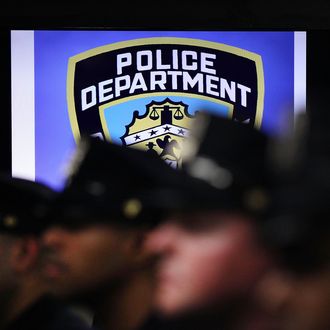
The NYPD has vowed to change the way it deals with the use of force by its officers. Conveniently enough, this news comes on the same day as the release of a report by Inspector General Philip Eure, who concluded that NYPD instruction on the use of force is “vague and imprecise, providing little guidance to individual officers on what actions constitute force … while offering [its officers] no clarity on what constitutes ‘excessive force.’”
NYPD “policies and training currently do not adequately address de-escalation as a useful tactic for officers in the field,” wrote Eure. Cops “are not only missing opportunities to deescalate, but are sometimes actively escalating situations with members of the public.” He also found that the “NYPD frequently failed to impose discipline even when provided with evidence of excessive force.”
Perhaps in light of all this, the NYPD has announced that it will provide officers with new use-of-force guidelines. From the New York Times:
The new guidelines are to be adopted as a new chapter, 221, to the department’s rule book, known as the Patrol Guide, and include definitions of levels of force: physical and pepper spray (Level 1); impact weapons, Tasers and other so-called less-lethal weapons (Level 2); and deadly force (Level 3).
Injuries — to officers and civilians — are also divided into three levels, from a minor physical injury, like swelling, to a “substantial physical injury,” such as a laceration requiring stitches, to a “serious” injury, including broken bones.
The new guidelines also detail when a gun should be drawn.
… The new policy, [Police Commissioner Bill Bratton’s chief of staff Kevin P. Ward] said, will make clear that to draw his gun, “an officer has to have an articulable belief there is a potential for serious physical injury.”
Officers will be explicitly prohibited from using force as punishment, retaliation or a means to stop a suspect from swallowing drugs. Chief Ward said officers at times held people down and tried to pry out drug evidence, leading to formal complaints.
Also: Officers who decline to step in when a colleague uses excessive force will now “face formal discipline.”
Meanwhile, the Times reports that starting in early 2016 the NYPD will begin attempting to track “routine” physical confrontations between cops and civilians, including “baton blows, physical altercations, mace spraying, takedowns,” “hand strike[s],” and “bite[s] by a police dog.” (As of now the NYPD only compiles and analyzes data on police violence when it involves gunfire.) “Officers will now be required to check a box on the new two-page form any time they use force … or encounter force from a person, such as a strike with an object, hand or foot, or spitting, pushing or grappling.”
Of course, as the paper notes, “How accurately officers will fill out the new forms is an open question.” The same could probably be said for how accurately they’ll follow the new guidelines, but at least it’s a start.





























